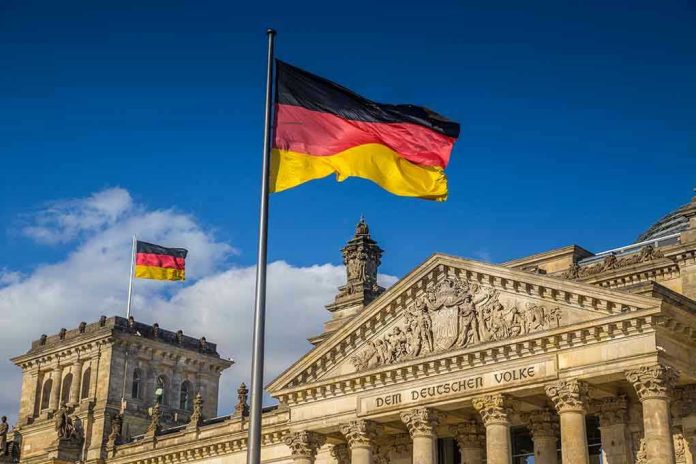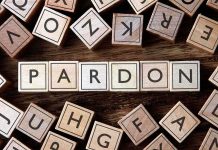
One man’s blood-soaked swastika spree in Hanau has ripped open Germany’s deepest wounds, forcing a city already haunted by hate to confront the unimaginable—again.
Story Snapshot
- Nearly 50 swastikas painted in human blood found across Hanau, Germany.
- A 31-year-old man, reportedly intoxicated, arrested and undergoing psychiatric evaluation.
- Incident evokes trauma from Hanau’s 2020 racist mass shooting.
- Police and officials stress personal motives but community bristles at renewed Nazi symbolism.
Human Blood and Nazi Symbols: Defacing a City’s Soul
November 6, 2025, Hanau police responded to a sight both grotesque and historically fraught: swastikas drawn in what appeared to be blood, scrawled across cars, mailboxes, and building facades. By dawn, nearly 50 acts of vandalism had been discovered, each symbol a chilling reminder of Germany’s darkest past. Laboratory analysis confirmed the substance was indeed human blood, amplifying the horror in a city still reeling from a 2020 racist attack that left nine dead.
Officers quickly identified and arrested a 31-year-old Romanian man at his residence. He was found intoxicated, bearing self-inflicted wounds believed to be the source of the blood. While the public speculated about neo-Nazi networks or organized hate, police pointed to a more personal and job-related motive. The suspect, whose name remains withheld due to privacy laws, was immediately placed under psychiatric evaluation, fueling debate about the intersection of mental health crises and hate crime in modern Germany.
The Shadow of Hanau’s Past and the Power of Symbols
Hanau’s pain is not theoretical. In 2020, the town suffered one of Germany’s deadliest far-right attacks since World War II, when a gunman targeted people with immigrant backgrounds. That night changed Hanau, forging a collective intolerance for hate, especially when it comes wrapped in Nazi symbols. The swastika, once an ancient sign, is now a symbol of Germany’s national trauma—banned by law, and carrying with it the memory of the Holocaust and the Nazi regime’s atrocities.
This latest defacement cut deeper than property damage. For residents, especially minority communities, the blood-red symbols were a violation—of public space, of personal safety, and of the city’s ongoing efforts to heal. Mayor Claus Kaminsky captured the mood in blunt terms, calling the act “crossing every boundary of decency and humanity” and vowing that Hanau would not be cowed by hate. His statement echoed the city’s resolve to prevent extremist ideas from taking root again, even as the motive for this specific act appears more personal than political.
Official Response and Community Impact
Authorities responded with swift condemnation and action. The Hanau Police Department launched a broad investigation into property damage and the use of unconstitutional symbols, working closely with federal officials given the sensitivity of Nazi iconography. Prosecutors confirmed no one was physically injured in connection with the vandalism, but the psychological wounds—especially for survivors and families of the 2020 attack—remain raw.
Immediate impacts included heightened anxiety, increased police patrols, and a robust public debate about the adequacy of Germany’s hate crime prevention. Property owners faced the financial and emotional burden of cleaning up, while minority residents voiced renewed concerns about safety and belonging. Nationally, the incident reignited conversations about the persistence of far-right symbolism and the legal, social, and psychological tools needed to counter it.
Rarity, Motive, and the Limits of Explanation
Experts in hate crime and mental health highlighted the rarity of using human blood as a medium for hate graffiti. Psychologists and legal scholars stressed the urgent need for mental health interventions, especially when personal crises manifest as public acts of symbolic violence. Legal experts reiterated that Germany’s strict prohibition on Nazi imagery is both a legal imperative and a moral one, designed to prevent the normalization of hate in public life.
Yet, the story remains tangled in ambiguity. Was this an act of ideological extremism, or the desperate outburst of a man in crisis? Police lean toward the latter, citing job-related stress and intoxication, with no evidence of broader conspiracy. Community leaders, however, warn that regardless of motive, the impact is the same: fear, anger, and the reopening of wounds that never fully healed. The investigation continues, but Hanau’s determination to resist hate has only grown stronger.
Sources:
ABC News: Dozens of swastikas painted in human blood daubed on property in German town
Fox4 News: Germany man arrested for painting swastikas in blood in Hanau















